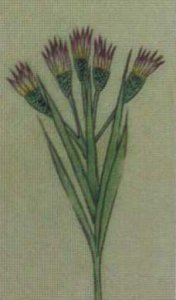Presented By: Medieval and Early Modern Studies (MEMS)
Fragments Workshop. Scented Protection: A History of Saffron in Medieval China
Yan Liu, SUNY Buffalo

Panelists: Aileen Das (Classical Studies), Amanda Repass (PhD student in History-Anthropology Program), and Paul Freedman (History, Yale).
The flourishing commerce of the Silk-Roads and the vibrant cultural exchange between China and the Western Regions (xiyu) fostered the circulation of diverse substances across the Eurasia continent. Prominent among them were a large number of aromatics of Indian, Persian, or Southeast Asian origin that entered Tang China (618-907) and transformed the landscape of Chinese medical practices. This paper focuses on a particular aromatic, saffron (yujin xiang), which came from northern India and Kashmir. The paper explores the identification of the plant in Chinese sources, various ways through which it was imported into China, and the diverse values it acquired there.
The flourishing commerce of the Silk-Roads and the vibrant cultural exchange between China and the Western Regions (xiyu) fostered the circulation of diverse substances across the Eurasia continent. Prominent among them were a large number of aromatics of Indian, Persian, or Southeast Asian origin that entered Tang China (618-907) and transformed the landscape of Chinese medical practices. This paper focuses on a particular aromatic, saffron (yujin xiang), which came from northern India and Kashmir. The paper explores the identification of the plant in Chinese sources, various ways through which it was imported into China, and the diverse values it acquired there.